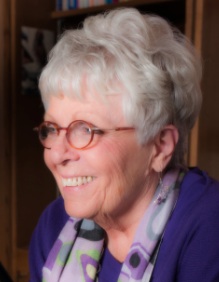To be involved in the study of music is to be involved in a passionate quest to achieve the best. The quest for perfection is often a journey that leads to disappointment, to euphoria, to frustration, to unimaginable levels of stress and to a sense of accomplishment rarely matched elsewhere. To be involved in the teaching of music is to understand the journey facing your students as well as the ups and downs they will experience along the way. To be involved in the teaching of required courses, particularly skills-based courses using an instrument unfamiliar to many of the students, is to realize the frustration of very talented students who are suddenly thrust into a learning challenge they might not have even anticipated in their music curriculum. When you have taught the same basic content and skills over an extended time period it is easy to forget what it is like to come to this learning as a total beginner.
I have believed for many years that the process is more important than the product. This comes from the feeling that a thoughtful process utilizing critical thinking skills, self-assessment and transfer of knowledge will yield the desired product. I also strongly endorse active learning within an environment that takes advantage of the benefits of group teaching. The undergraduate courses I teach are lower division group piano classes required of all non-pianist music students pursuing a Bachelor of Music or Bachelor of Arts in Music degree. Instruction occurs in a digital keyboard lab with sixteen student instruments. The mode of instruction may be controlled through a communication system allowing work as a whole of sixteen, work as an individual or work as a variety of group configurations. Such a learning environment helps to embrace the main components of active learning: dialogue with self, dialogue with others, observing and doing.
Within the group learning environment, involvement of students is critical. It is also critical that I as the facilitator of learning in this environment use a variety of teaching styles to address the diversity of learning styles present within the classroom. Within a given class this variety may include questions directed to specific students, discussions involving the entire group, peer assessment occurring within pairs of students who are actually linked to hear one another’s voice and keyboard, ensemble performances of quartets or sextets, drill activities involving the entire group with all students hearing one another’s instruments, drill activities conducted “over headsets” that enable students to hear only their individual instrument and my voice and instrument, functional skill activities such as sight reading, harmonizing or transposition presented using projected computer examples and performances of student improvisation, composition and repertoire. Such a variety of activities would ensure that the needs of the three types of learners possible within the class – visual, aural and kinesthetic – would be addressed.
At the top of my list of priorities for my students is that they see two things in my teaching and facilitating – enthusiasm and curiosity. An enthusiasm for knowledge gained and even more important, knowledge used and a passionate curiosity for that which is unknown. If these do not exist in you the teacher, they most certainly will not reside within your classroom or within your students in that classroom. With enthusiasm and curiosity on both sides of the desk, all things are possible. Without them, who knows?


I feel it is important to set goals for your students, realistic goals that challenge, goals that are high yet attainable. Recognizing the strengths and weaknesses of individual students is a key to success within the classroom often populated with diverse pianistic abilities. It is my responsibility to play to the strengths of my students rather than cause embarrassment through their weaknesses. They must see my classroom as a safe educational environment, an environment where it is okay to make a mistake, to have a differing opinion, to suggest a different musical interpretation or technical execution. My students know that my expectations are high and the majority of them understand the relevance of what happens in the piano classroom to much of the theoretical and musicological knowledge they will gain during their undergraduate and possibly graduate studies. The ability to use the piano as a tool is critical to the developing musician. It is this ability coupled with the transfer of both knowledge and skill from the known to the unknown that will enable students to become independent learners.
I have created a web site dedicated to the group piano program, a virtual second text book for the student who misses class due to illness or other reasons, for the student who needs additional drill on certain concepts or skills areas, and also for that student who has questions but will never ask them in front of peers. Using Dreamweaver MX, Director MX and the Shockwave plug-in, I have provided additional practice drills as well as tutorials reinforcing in-class materials that encourage students to use the computer as a practice supervisor and out-of-class support when they cannot meet personally with me.

